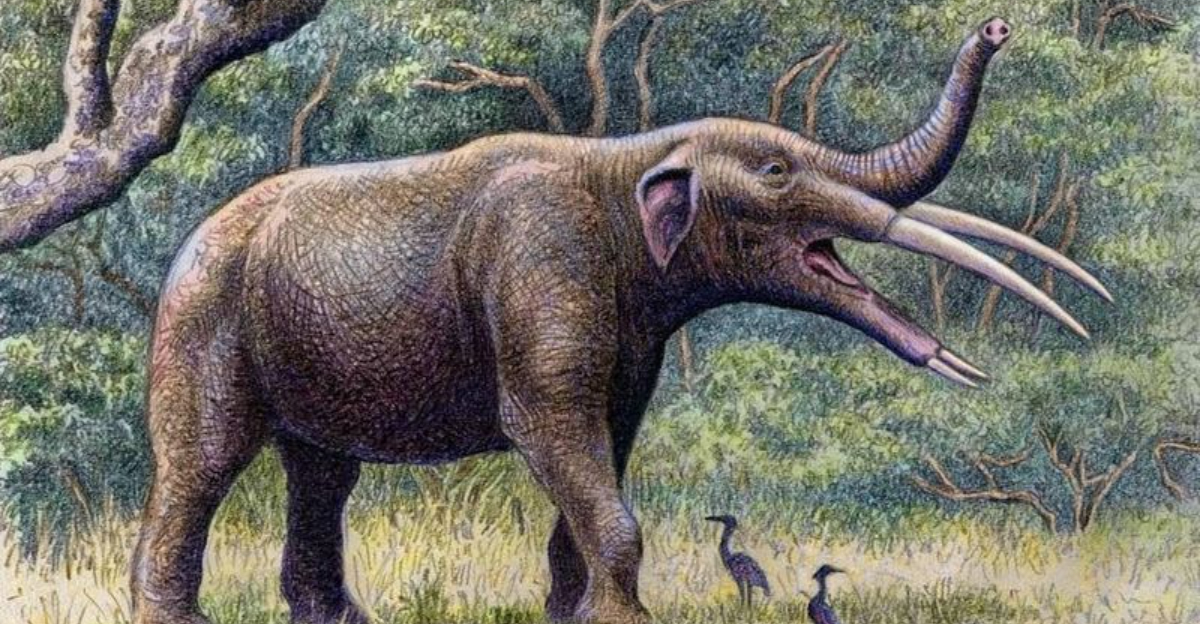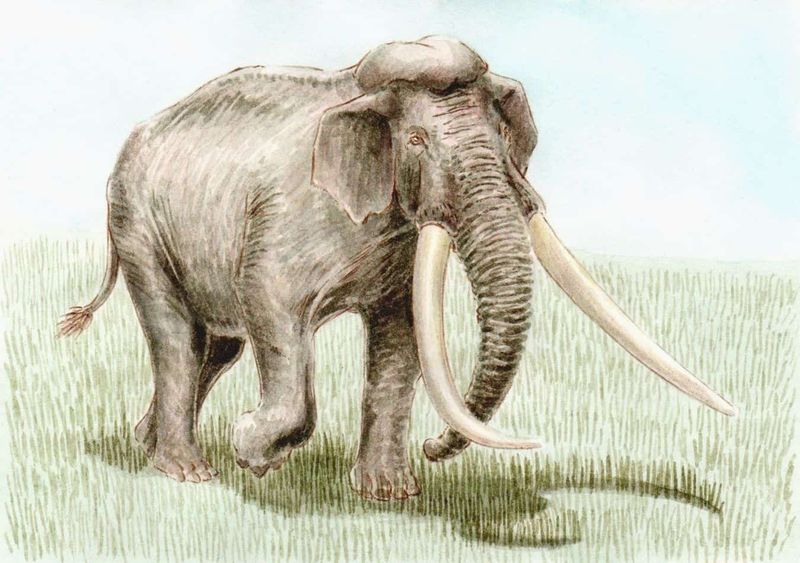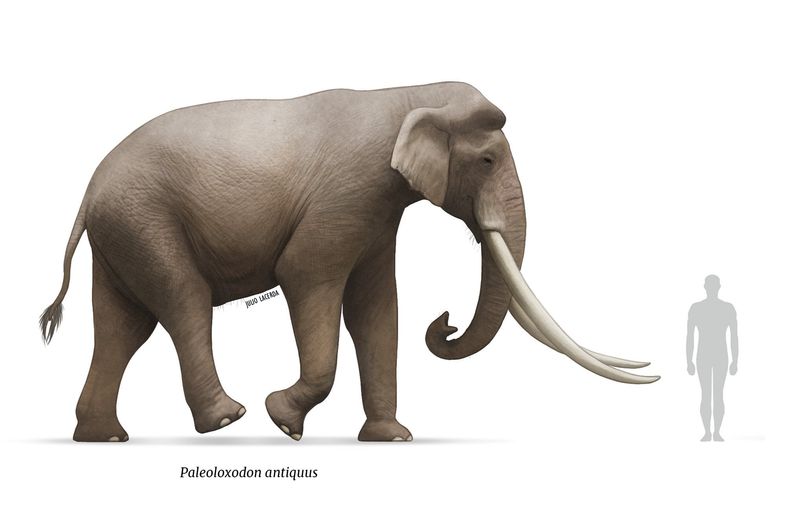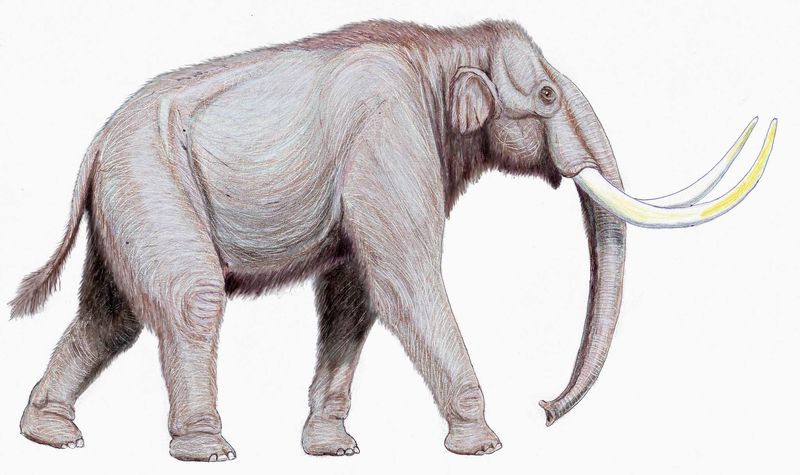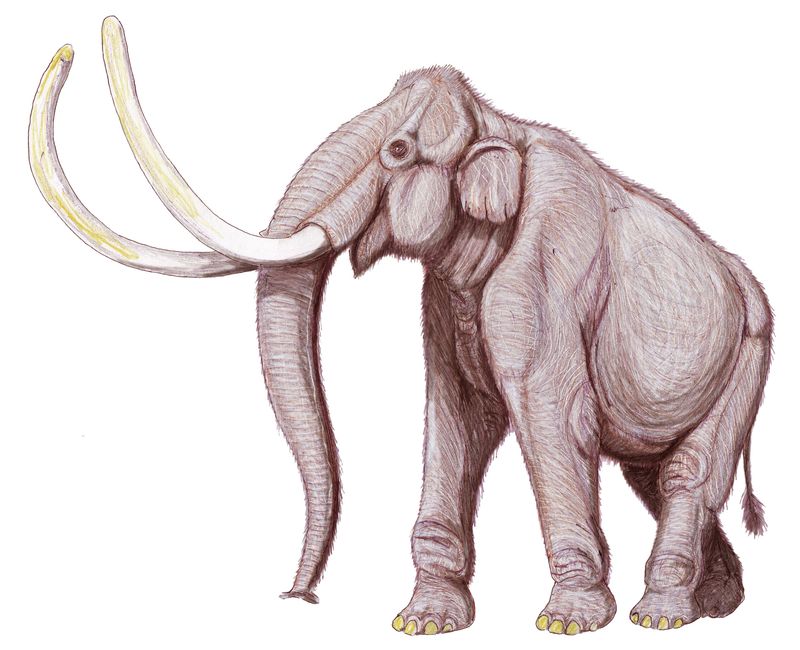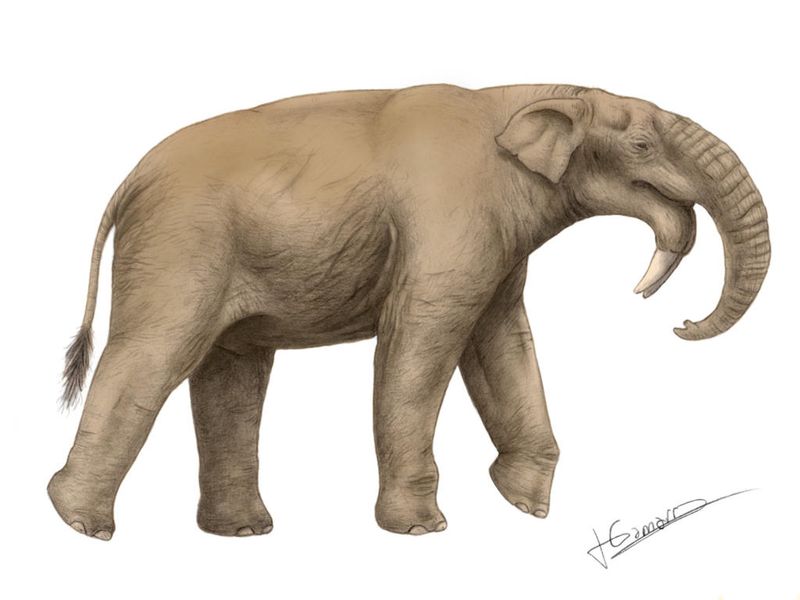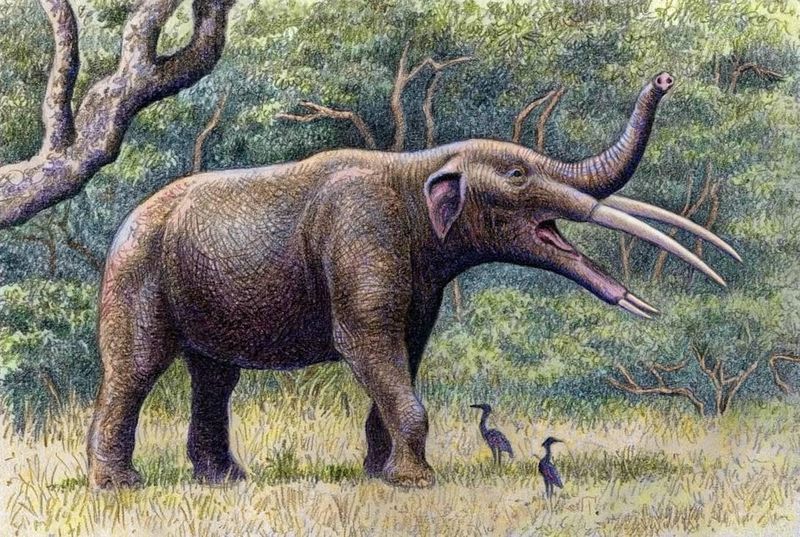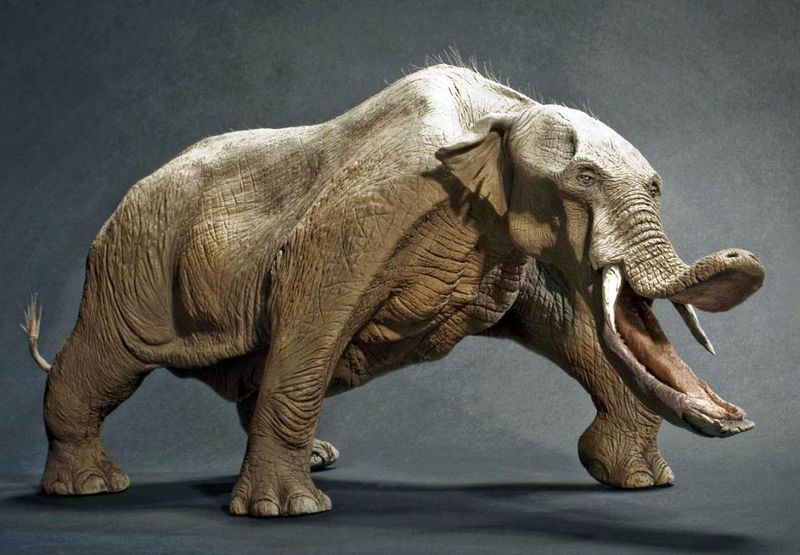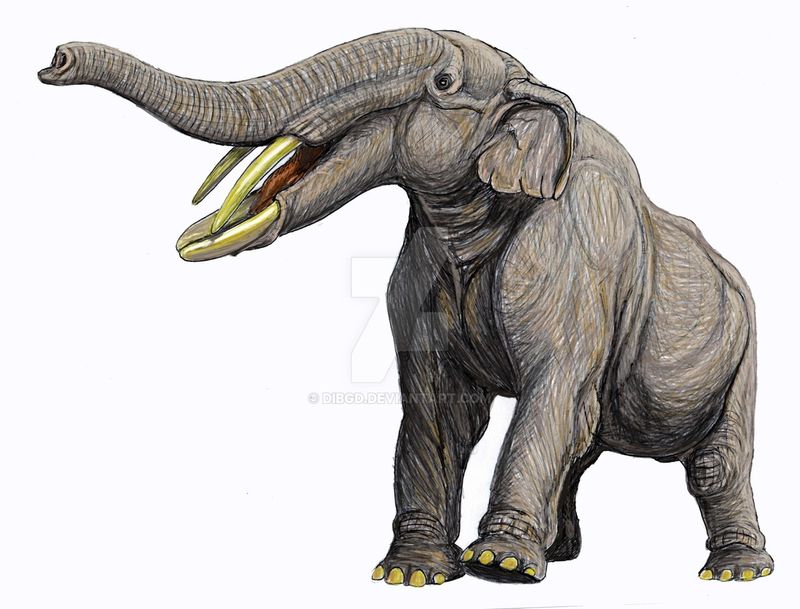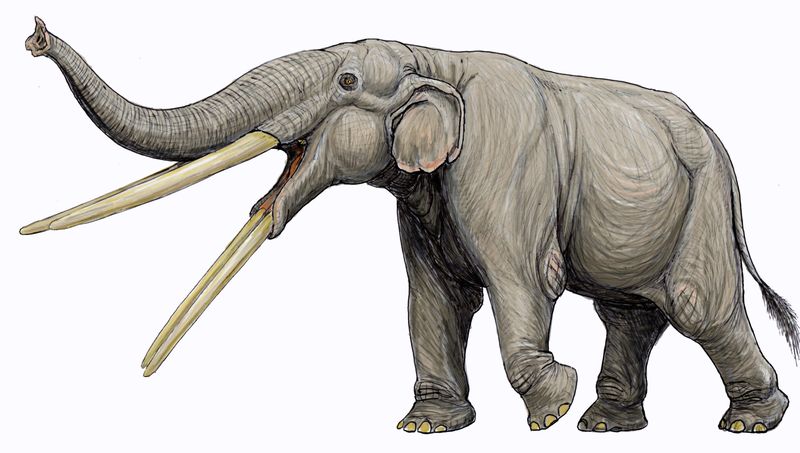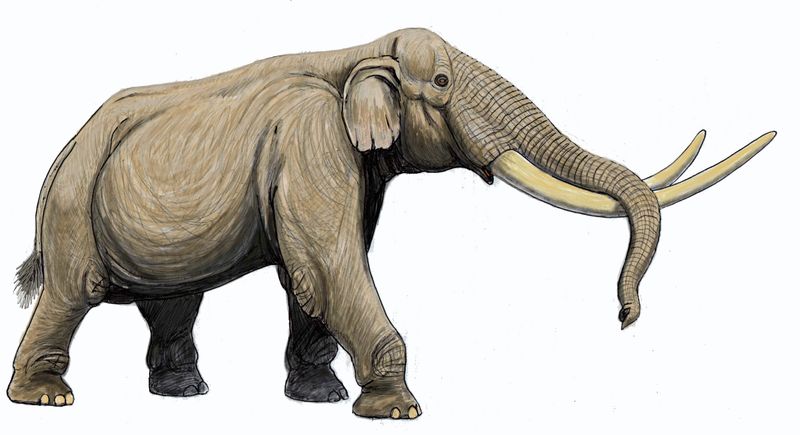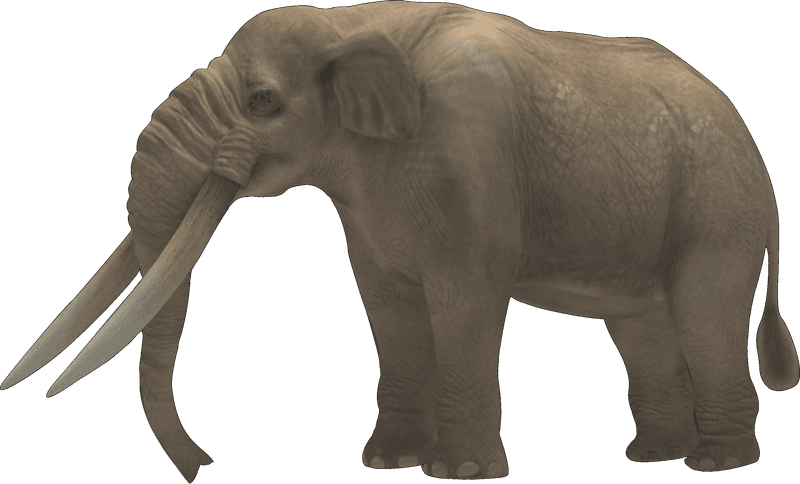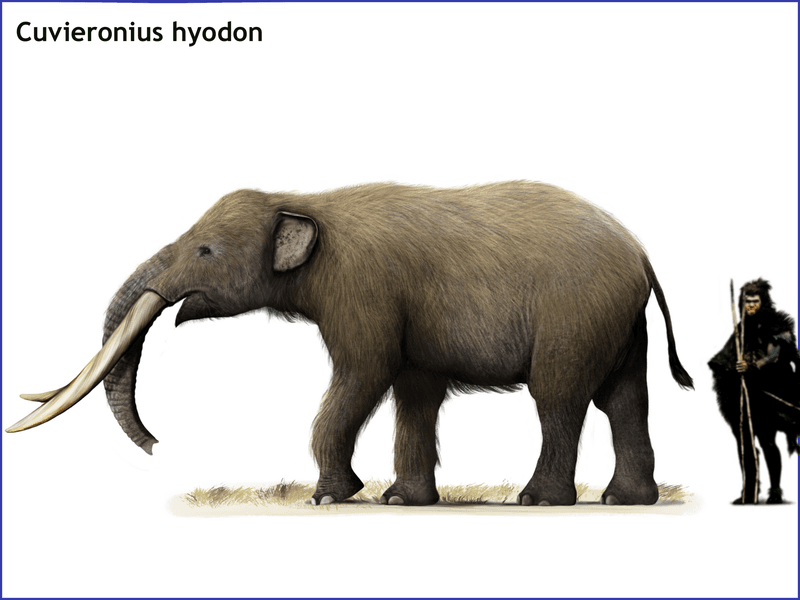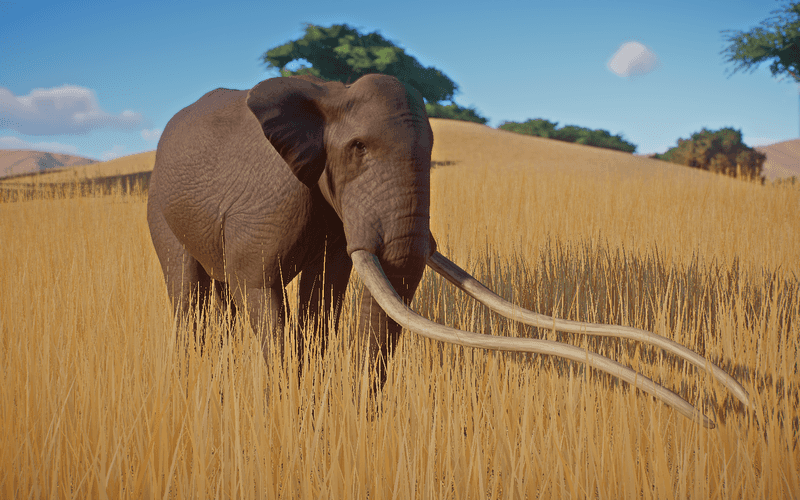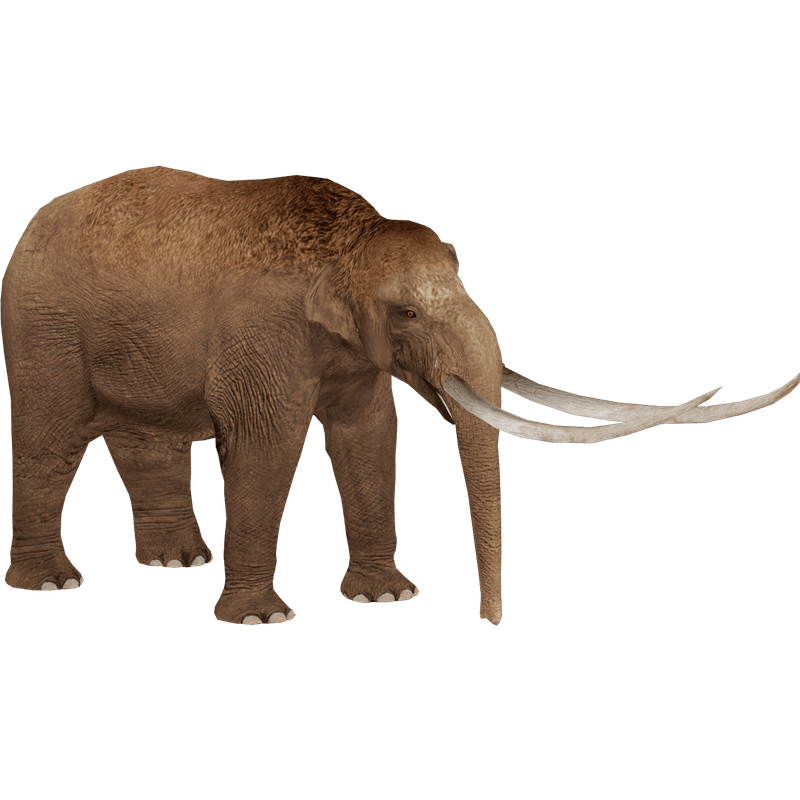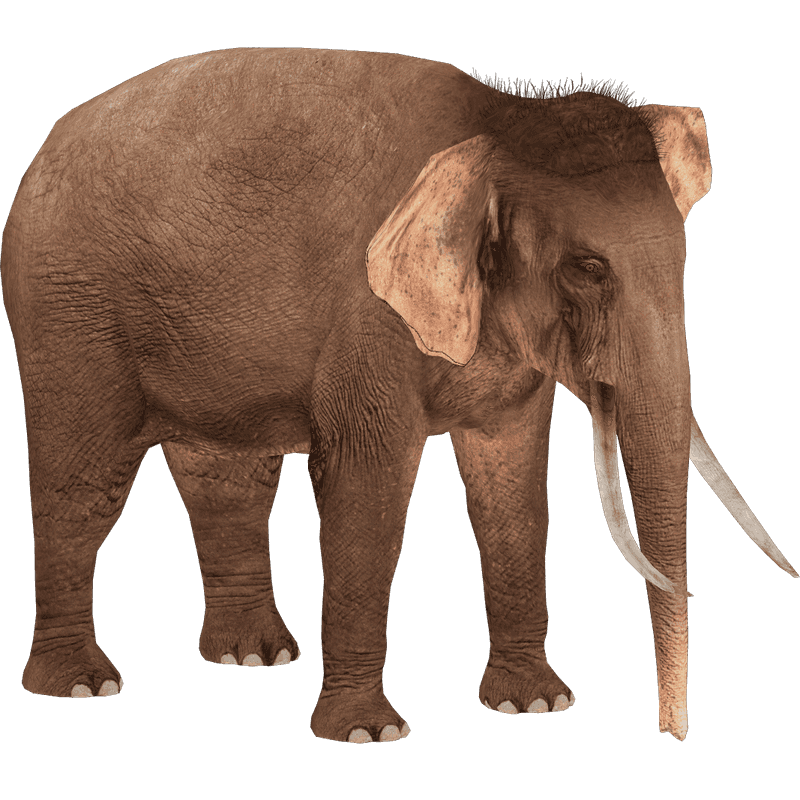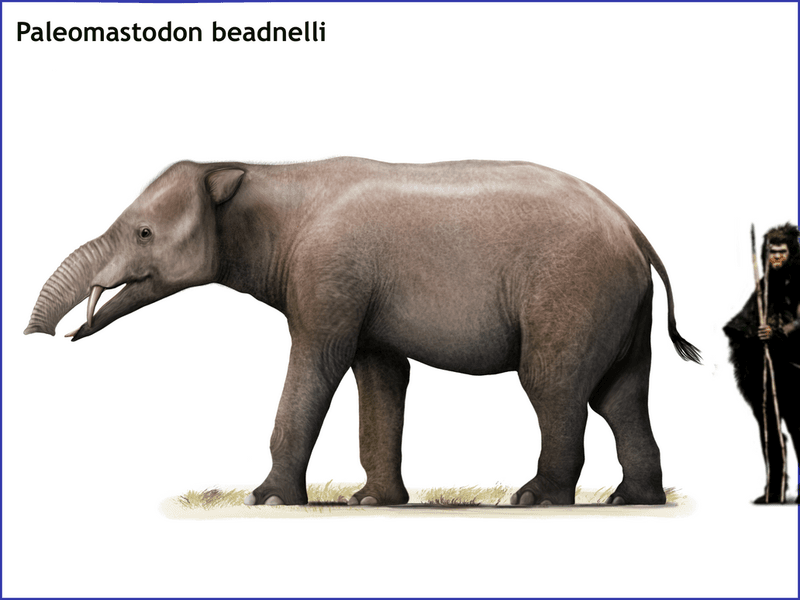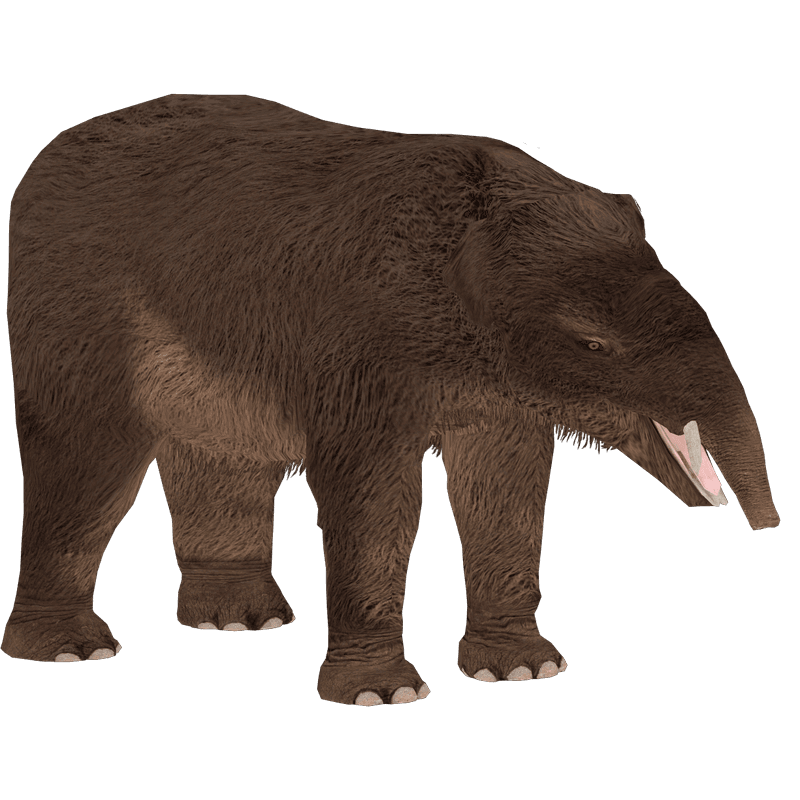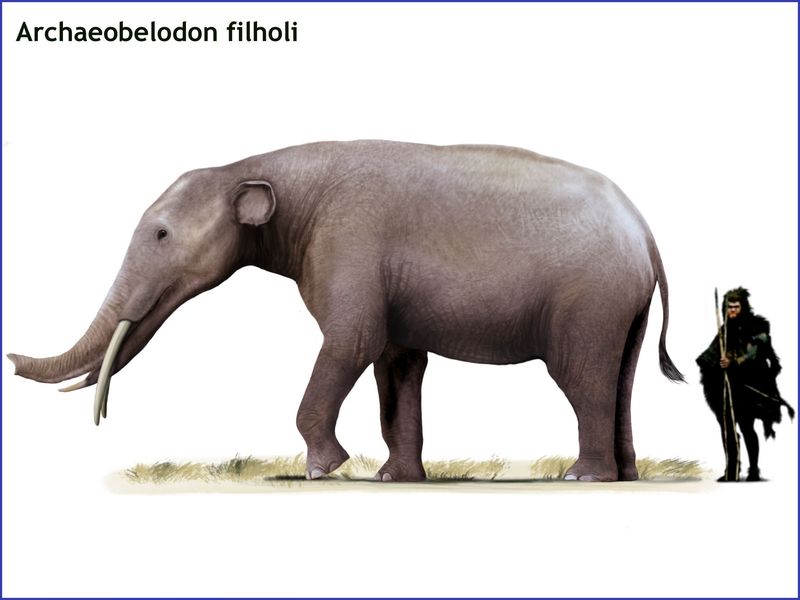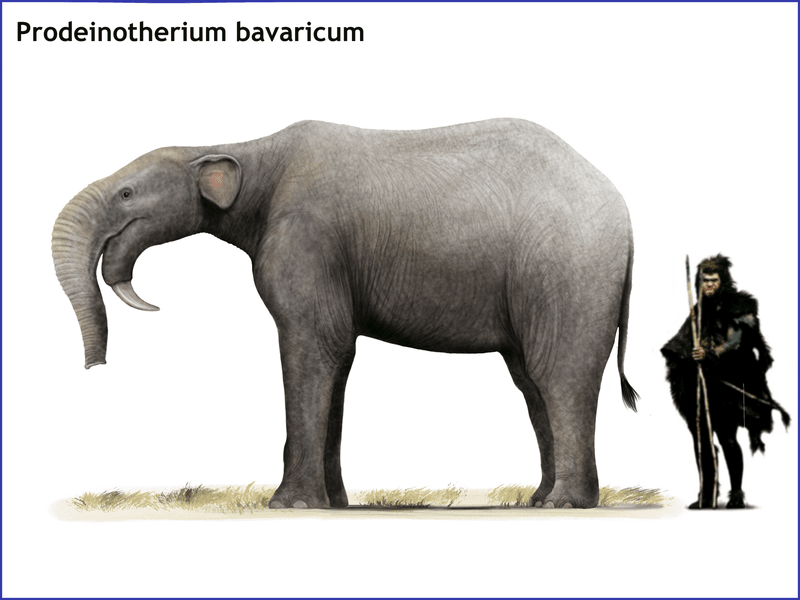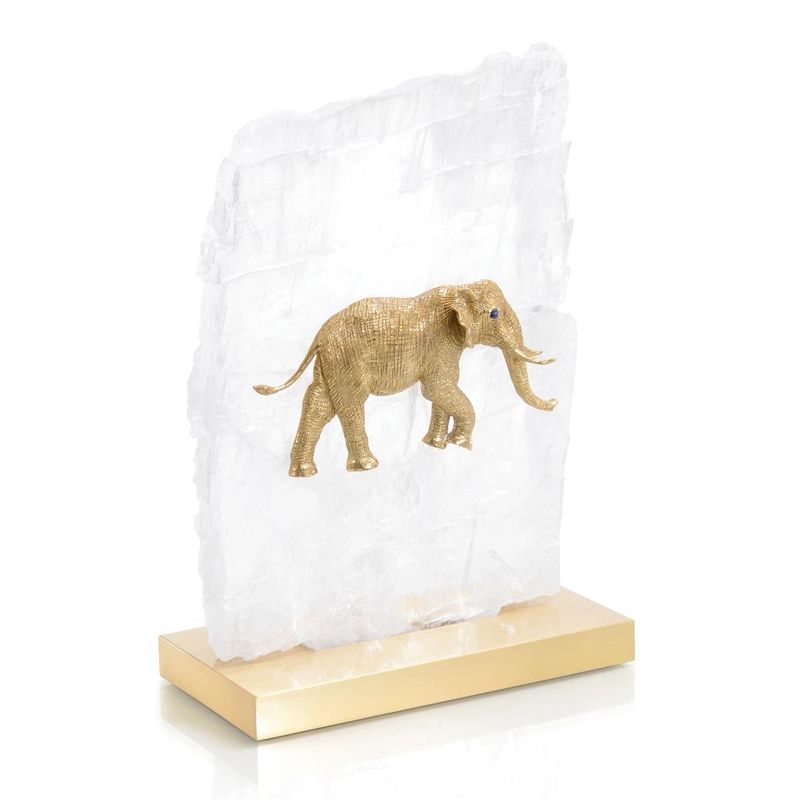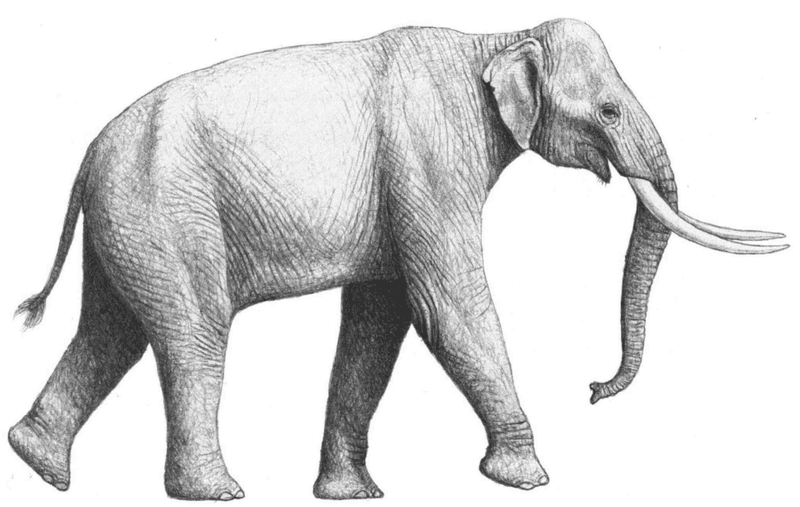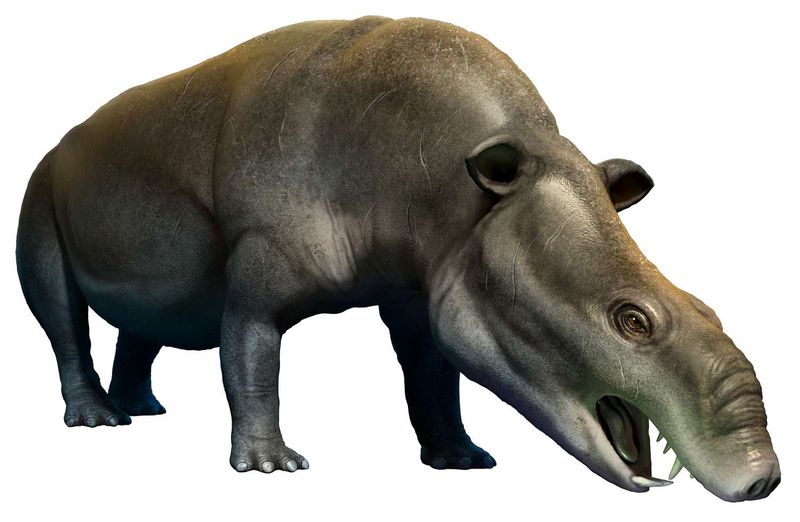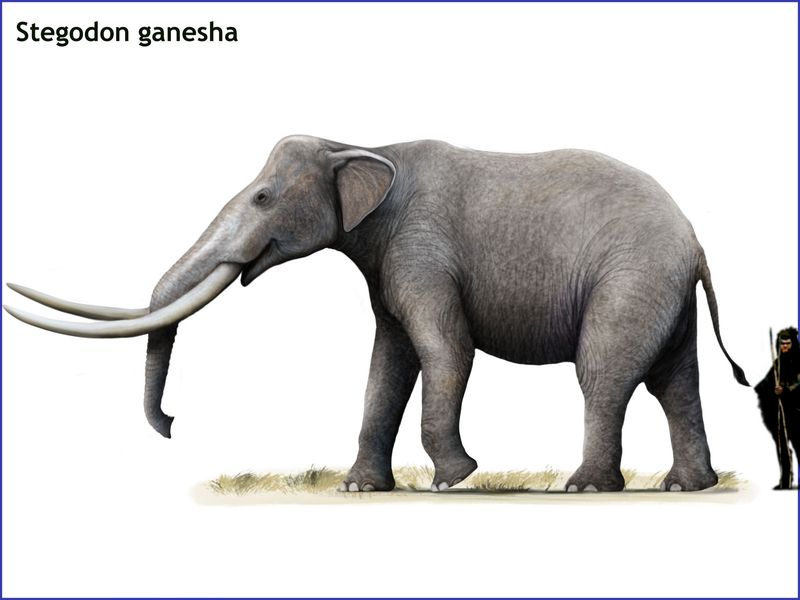Explore an incredible journey back in time to discover 25 astonishing ancient elephants that once roamed our planet.
These magnificent creatures exhibit fascinating features, from enormous tusks to unique adaptations, capturing our imagination and offering a glimpse into the diverse world of prehistoric proboscideans.
1. Palaeoloxodon namadicus
The Palaeoloxodon namadicus is fascinating due to its sheer size, surpassing the modern-day African elephant in height and weight. Scholars suggest it may have been the largest land mammal ever.
Its imposing presence would have dominated the landscapes it roamed. With formidable tusks and a robust build, this giant proboscidean’s existence raises intriguing questions about its habitat and behavior.
Paleontologists continue to study its fossils, unraveling mysteries about its life and eventual extinction. These elephants serve as a testament to the diverse evolutionary paths proboscideans have taken.
2. Palaeoloxodon antiquus (Straight-Tusked Elephant)
Known for its immense size, Palaeoloxodon antiquus towered over today’s elephants. Its long, straight tusks added to its majestic appearance. This giant roamed the woodlands of Europe, showcasing evolutionary adaptations to its environment.
Its legacy remains in the fossil records, providing valuable insights into the migration patterns and climatic adaptations of ancient elephants.
The study of its fossilized remains offers a window into the Pleistocene epoch, a time of significant environmental change. Enthusiasts marvel at the straight-tusked elephant’s grandeur and the role it played in its ecosystem.
3. Mammuthus trogontherii (Steppe Mammoth)
The Steppe Mammoth, or Mammuthus trogontherii, was one of the largest mammoth species. It roamed the expansive steppes of Eurasia during the Ice Ages, thriving in cold climates.
With its shaggy coat and massive curved tusks, it was well adapted to its harsh environment. Fossils reveal its impressive size and hints of social behavior.
Researchers study its adaptation mechanisms, providing insights into survival strategies during the Ice Ages. The Steppe Mammoth’s presence in prehistoric times illustrates the adaptability and resilience of ancient elephants in fluctuating climates.
4. Mammuthus columbi (Columbian Mammoth)
Mammuthus columbi, known as the Columbian Mammoth, inhabited warmer climates than its woolly relatives. Found across North America, this mammoth reached up to 4 meters at the shoulder.
Its long, gently curving tusks and large trunk were characteristic features. The Columbian Mammoth adapted to diverse habitats, from grasslands to forests. Fossils reveal clues about its diet, social structure, and interactions with early humans.
Paleontologists explore its role in ecosystems, providing a broader understanding of Pleistocene megafauna. The Columbian Mammoth remains an iconic symbol of prehistoric North America.
5. Mammuthus primigenius (Woolly Mammoth)
The Woolly Mammoth, or Mammuthus primigenius, is the quintessential Ice Age creature. Adapted for frigid climates, it sported thick fur, a humped back, and long, curved tusks.
These majestic creatures thrived in the tundra, with fossils found across Europe, Asia, and North America. Their remains offer insights into the Pleistocene epoch, revealing dietary habits and social structures.
Studies on preserved specimens provide clues about their extinction, with climate change and human hunting as potential factors. The Woolly Mammoth continues to captivate researchers and the public alike.
6. Mammut americanum (American Mastodon)
The American Mastodon, or Mammut americanum, was a stocky proboscidean roaming North America’s forests and wetlands. Unlike mammoths, mastodons had cone-shaped cusps on their molars, perfect for chewing tough vegetation.
Their robust build and shorter limbs were adaptations for dense woodlands. Fossil evidence reveals their widespread presence and interactions with early humans.
Paleontologists study mastodon remains to understand their ecology and reasons for extinction.
The American Mastodon’s unique features highlight the evolutionary diversity among ancient elephants, offering fascinating insights into prehistoric ecosystems and their inhabitants.
7. Deinotherium giganteum
Deinotherium giganteum, meaning “terrible beast,” was one of the largest prehistoric elephants. Its most distinctive feature was its downward-curving tusks attached to the lower jaw, unlike other elephants.
These giants roamed the landscapes of Eurasia and Africa, using their tusks for foraging and possibly defense. Fossil evidence suggests they lived in herds and had social structures similar to modern elephants.
Researchers explore their evolutionary history, uncovering clues about their adaptations and eventual extinction. Deinotherium’s unique anatomy continues to intrigue scientists and contribute to our understanding of proboscidean evolution.
8. Gomphotherium
Gomphotherium, a remarkable ancestor to modern elephants, sported four tusks—two upper and two lower. This unique adaptation is thought to have helped in foraging and manipulating food.
These elephants roamed across Africa, Eurasia, and the Americas, showcasing a wide geographical range. Their elongated lower jaws are a distinctive feature, providing insights into feeding habits and environmental adaptations.
Fossil records reveal their evolutionary journey, tracing back millions of years. Gomphotherium’s diverse habitat suggests a highly adaptable species, illustrating the evolutionary experiments within the proboscidean lineage.
9. Platybelodon
Platybelodon, often dubbed the “shovel-tusked elephant,” had a unique adaptation: flattened lower tusks. These tusks likely helped it scoop up aquatic vegetation in marshy environments.
Its distinctive jaw structure set it apart from other proboscideans, highlighting evolutionary experimentation. This ancient elephant thrived in wetlands, showcasing its adaptability and specialized feeding strategies.
Fossils offer glimpses into its life, revealing its role within prehistoric ecosystems. Platybelodon remains a symbol of nature’s ingenuity, inspiring curiosity about how ancient animals adapted to their environments and contributed to the biodiversity of their time.
10. Amebelodon
Amebelodon, closely related to Platybelodon, also possessed unique shovel-like tusks. These wide, flattened lower tusks were ideal for digging and foraging, adapting to grassland environments.
Its distinct anatomical features underscore the diversity within ancient elephant species. Fossil discoveries reveal Amebelodon’s distribution across North America and Asia, indicating widespread adaptability.
As scientists continue to study its remains, they uncover insights into its diet, behavior, and ecological impact.
Amebelodon exemplifies the evolutionary paths explored by proboscideans, showcasing nature’s ability to innovate and diversify across different habitats and eras.
11. Stegotetrabelodon
Stegotetrabelodon, an early elephantid, was notable for its four tusks—two in the upper jaw and two in the lower. This unusual dental arrangement provided advantages in foraging and defense.
These elephants inhabited various regions in Africa, adapting to diverse climates and landscapes. Fossil evidence suggests complex social structures and behaviors, similar to modern elephants.
Researchers explore their evolutionary significance, tracing the lineage of proboscideans through time.
Stegotetrabelodon’s unique anatomy highlights the rich tapestry of elephant evolution, illustrating the adaptability and resilience of ancient elephants in changing environments.
12. Stegodon
Stegodon, with its long, nearly parallel tusks, was one of the remarkable giants of Pleistocene Asia. Different species varied in size, with some growing to enormous proportions.
Their distinct dental structure set them apart from other proboscideans, allowing them to thrive in diverse habitats. Fossil records indicate a wide distribution across Asia, revealing adaptability to climatic changes.
Researchers study Stegodon fossils to understand their ecological roles and evolutionary history. The Stegodon exemplifies the diversity and adaptability of ancient elephants, providing a window into the rich biodiversity of prehistoric Asia.
13. Notiomastodon platensis
Notiomastodon platensis, once thought to be a mastodon, is a fascinating gomphothere from South America. It inhabited savannas and woodlands, showcasing adaptations to varied environments.
Its features blend characteristics of elephants and mastodons, highlighting evolutionary diversity. Fossil evidence reveals its widespread distribution, offering insights into its ecology and behavior.
Paleontologists study these remains, exploring the evolutionary pathways of proboscideans in South America.
Notiomastodon exemplifies the intricate web of ancestry and adaptation, illustrating the complex interactions between evolving species and their environments over millions of years.
14. Cuvieronius hyodon
Cuvieronius hyodon was a trunk-bearer resembling modern elephants but with unique adaptations. It thrived in both the Andean highlands and lower altitudes, showcasing remarkable adaptability.
Its presence in diverse environments highlights evolutionary innovation among proboscideans. Fossil finds in South America provide valuable data on its diet and habitat preferences.
Researchers delve into its ecological impact, exploring interactions with other species and climatic shifts.
Cuvieronius stands as a testament to the dynamic evolutionary history of elephants, offering insights into how ancient species navigated complex landscapes and environmental challenges.
15. Anancus arvernensis
Anancus arvernensis, a European proboscidean, is renowned for its impressively long, straight tusks. These tusks, exceeding its body height, provided a striking appearance and possible advantages in foraging.
It thrived in the woodlands of prehistoric Europe, adapting to cooler climates. Fossil evidence reveals its role in ancient ecosystems and its interactions with contemporary species.
Researchers explore its evolutionary significance as part of the diverse proboscidean family. Anancus remains a captivating subject for paleontologists, illustrating the vast morphological diversity within ancient elephants and their evolutionary journey across continents.
16. Zygolophodon
Zygolophodon, a primitive mastodon-like creature, is notable for its distinctive zig-zag lophs on its molars. These unique dental features suggest specialized feeding adaptations, likely aiding in grinding tough vegetation.
Its presence in Africa’s prehistoric forests highlights the diversity of ancient elephantids. Fossil discoveries provide insight into its evolutionary history and ecological role.
Researchers study its anatomical features to understand dietary preferences and adaptation mechanisms.
Zygolophodon serves as a crucial link in the proboscidean lineage, contributing to our understanding of the evolutionary pathways that led to modern elephants.
17. Primelephas gomphotherioides
Primelephas gomphotherioides is thought to be a direct ancestor of both modern elephants and mammoths. It bridges older and newer proboscidean lineages, showcasing transitional features.
This prehistoric elephant roamed the landscapes of Africa, adapting to various environments. Fossil evidence provides insights into its evolutionary role and anatomical characteristics.
Researchers study Primelephas to understand the genetic and morphological shifts that led to modern elephants.
Its place in the proboscidean family tree highlights the complexity and continuity of elephant evolution, offering a glimpse into the origins of today’s majestic giants.
18. Palaeomastodon
Palaeomastodon, an ancient proboscidean, lived about 35 million years ago in Africa. It featured short upper tusks and elongated lower tusks, adaptations that influenced its feeding strategies.
This early elephant relative inhabited ancient forests, showcasing early evolutionary experiments in proboscidean anatomy. Fossil records provide glimpses into its life and environment, offering valuable data on its role in prehistoric ecosystems.
Researchers explore its evolutionary significance, tracing the lineage of modern elephants. Palaeomastodon remains a fascinating subject, illustrating the diverse paths taken by ancient elephants on their evolutionary journey.
19. Phiomia
Phiomia, an early proboscidean from Egypt, lived during the Eocene-Oligocene period. It had relatively short tusks and a primitive trunk, showcasing early adaptations in elephant evolution.
These features highlight the transitional traits between ancestral forms and more advanced proboscideans. Phiomia inhabited semi-aquatic environments, contributing to the rich biodiversity of its time.
Fossil evidence provides insights into its diet and behavior, helping researchers understand the adaptive strategies of early elephants.
Phiomia’s evolutionary journey underscores the complexity of proboscidean development and the gradual emergence of the traits seen in modern elephants.
20. Archaeobelodon
Archaeobelodon displayed transitional characteristics between earlier gomphotheres and more advanced elephant ancestors. This intermediate form provides crucial insights into proboscidean evolution.
It inhabited African landscapes, adapting to diverse environmental conditions. Fossil discoveries reveal its anatomical features, shedding light on its dietary habits and ecological role.
Researchers explore its evolutionary significance, tracing the links between ancient and modern elephants.
Archaeobelodon exemplifies the dynamic evolutionary processes that shaped the proboscidean lineage, highlighting the gradual development of traits that define today’s elephants. It remains a key species in understanding the origins and adaptations of ancient elephants.
21. Prodeinotherium
Prodeinotherium, a smaller relative of Deinotherium, shared the distinctive downward-curving tusks. These tusks were adaptations for foraging and possibly defense.
It inhabited the landscapes of Eurasia, showcasing evolutionary diversification within the Deinotherium family. Fossil evidence reveals its distribution and ecological role, providing insights into its behavior and adaptations.
Researchers study Prodeinotherium to understand the evolutionary pathways of proboscideans, examining how different species adapted to changing environmental conditions.
This fascinating creature highlights the rich diversity and evolutionary experimentation within ancient elephants, contributing to our understanding of their complex evolutionary history.
22. Loxodonta adaurora
Loxodonta adaurora is a prehistoric African elephant closely related to today’s African elephants. Its existence provides valuable clues about the evolutionary history and adaptations of modern proboscideans.
This species inhabited ancient savannahs, adapting to varying climates and landscapes. Fossil records reveal anatomical similarities and differences, offering insights into its ecological role.
Researchers study Loxodonta adaurora to trace the lineage and evolutionary changes leading to contemporary elephants.
It remains a crucial link in understanding the adaptations and evolutionary success of African elephants, offering a glimpse into the past and the evolutionary journey of these majestic creatures.
23. Elephas (Palaeoloxodon) recki
Elephas (Palaeoloxodon) recki is known from extensive fossil sites across Africa. This species exhibited diverse size variations, adapting to different ecological niches.
Its association with straight-tusked elephants highlights evolutionary diversity within the Palaeoloxodon genus. Fossils provide insights into its diet, habitat preferences, and interactions with other species.
Researchers explore its evolutionary significance, contributing to the broader understanding of proboscidean evolution.
Elephas recki’s adaptability and diverse morphology exemplify the evolutionary success of ancient elephants, showcasing their ability to thrive in changing environments and their impact on prehistoric ecosystems.
24. Moeritherium
Moeritherium was a semi-aquatic ancestor of modern elephants, resembling a small hippo in size and shape. It inhabited ancient waterways during the Eocene epoch, showcasing unique adaptations for a semi-aquatic lifestyle.
Fossil evidence reveals its anatomical features, providing insights into its diet and behavior. Moeritherium’s existence highlights the diverse evolutionary strategies employed by early proboscideans.
Researchers study its remains to understand the origins and adaptations of modern elephants. This intriguing creature offers a glimpse into the evolutionary processes that shaped the proboscidean lineage, illustrating the dynamic interplay between environment and evolution.
25. Stegodon ganesa
Stegodon ganesa, a species within the Stegodon genus, is notable for its particularly large tusks. These tusks contributed to its reputation as a megaherbivore, adapted to the dense forests of Asia.
Fossil evidence reveals its size and adaptations, showcasing evolutionary diversity within proboscideans. Researchers study Stegodon ganesa to understand its ecological role and interactions with other species.
Its presence in prehistoric Asia highlights the rich biodiversity and evolutionary experimentation within ancient elephants.
Stegodon ganesa remains a fascinating subject for paleontologists, illustrating the complex evolutionary history of proboscideans in Asia.
